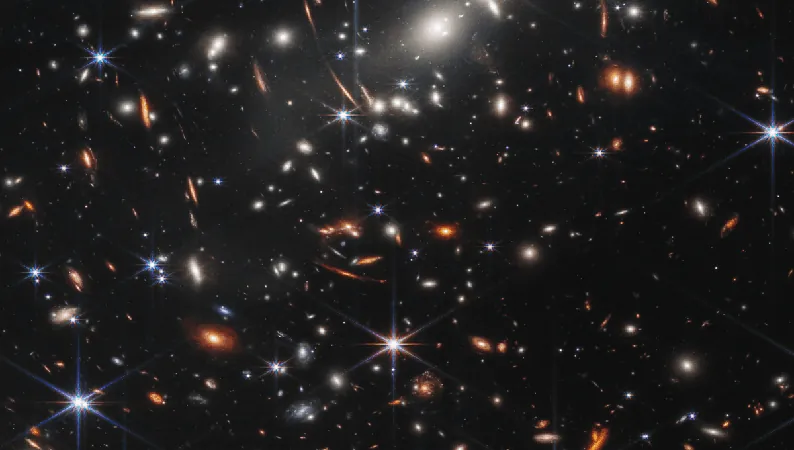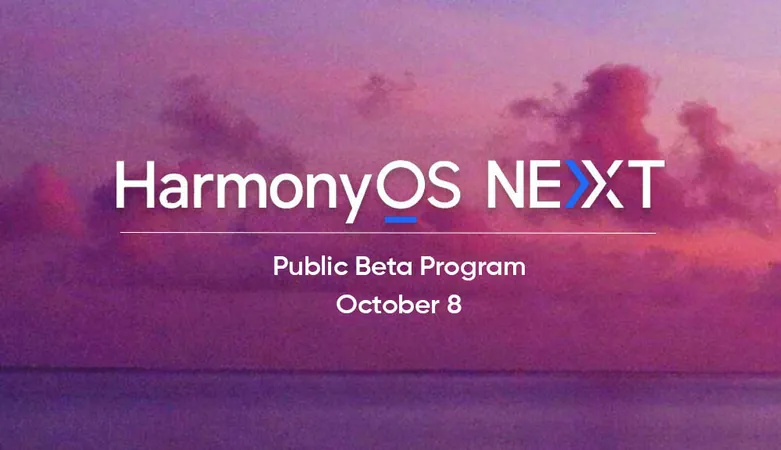
Hubble Tension Breakthrough? Astronomers Sprint to Uphold Cosmological Standards
2024-09-25
Author: Siti
The universe is undeniably expanding at an ever-accelerating rate, but the driving forces behind this expansion—particularly the enigmatic phenomenon known as "dark energy"—remain shrouded in mystery. This hypothetical form of energy, which some describe as being akin to anti-gravity, complicates our understanding of the cosmos and forces astronomers to rethink the crucial figures associated with the expansion, most notably, the Hubble constant.
In recent months, this debate has heated up as new measurements have emerged, fueling a hot topic in cosmology: the so-called "Hubble tension." The discord stems from differing methodologies used to measure the expansion rate, resulting in an alarming gap between findings. For instance, the Hubble Space Telescope has provided a figure of 73 kilometers per second per megaparsec, while the Planck Observatory, examining the cosmic microwave background (CMB)—the afterglow of the Big Bang—detected a significantly lower value of 67.4 kilometers per second per megaparsec.
The implications of this conflict are profound. The prevailing model of cosmology, which posits that the universe began with a Big Bang and has been steadily expanding ever since, is now under scrutiny. Various observatories are grappling with the discrepancies, and questions loom large over the accuracy of either measurement or potentially even the model itself.
Recently, groundbreaking research from the Dark Energy Spectroscopic Instrument (DESI) unveiled a remarkably expansive 3D map of the universe, enabling astronomers to estimate cosmic expansion rates from 8 to 11 billion years ago. Remarkably, these ancient measurements correlate with findings from the CMB, suggesting a glimmer of unity in the dispersion of values.
Adding to this puzzle, a research team led by Professor Wendy Freedman from the University of Chicago has utilized the James Webb Space Telescope (JWST) to forge a more precise estimate of the Hubble constant. By employing three independent measurement techniques, including the well-known Cepheid variable stars, Freedman's team calculated an expansion rate of 69.96 kilometers per second per megaparsec. While this figure falls in line with the CMB-derived value, Freedman cautions that the nagging Hubble tension is not yet resolved, as anomalies in measurements of distant galaxies through JWST still need clarity.
Moreover, the field of cosmology is abuzz with intriguing theories suggesting new dimensions of dark energy could exist. One such proposal posits a fleeting form of "early dark energy," potentially influencing cosmic growth during the universe's infancy. If validated, this theory might reconcile the existing discrepancies in expansion rates.
While exciting developments are on the horizon, the reality persists that key uncertainties remain. As Professor Freedman aptly stated, “More data are needed before additions to the standard cosmological model are warranted." The race is on for astronomers to unify these disparate measurements and potentially redefine our understanding of the universe once and for all.
Stay tuned as the saga of the Hubble tension unfolds—could a monumental shift in our understanding of cosmic expansion be just around the corner?



 Brasil (PT)
Brasil (PT)
 Canada (EN)
Canada (EN)
 Chile (ES)
Chile (ES)
 España (ES)
España (ES)
 France (FR)
France (FR)
 Hong Kong (EN)
Hong Kong (EN)
 Italia (IT)
Italia (IT)
 日本 (JA)
日本 (JA)
 Magyarország (HU)
Magyarország (HU)
 Norge (NO)
Norge (NO)
 Polska (PL)
Polska (PL)
 Schweiz (DE)
Schweiz (DE)
 Singapore (EN)
Singapore (EN)
 Sverige (SV)
Sverige (SV)
 Suomi (FI)
Suomi (FI)
 Türkiye (TR)
Türkiye (TR)